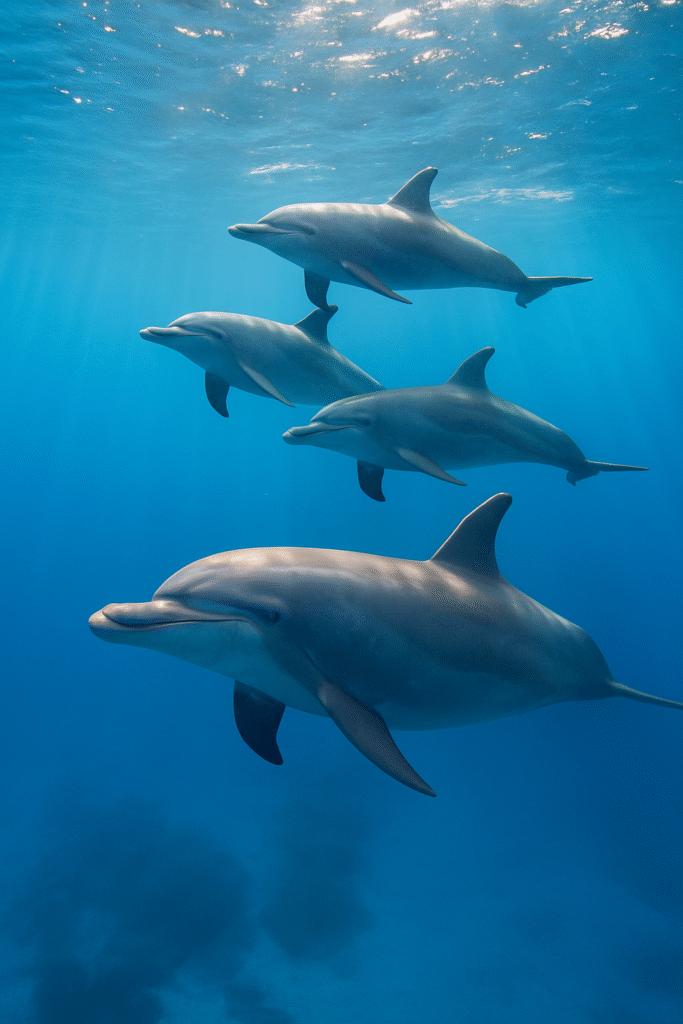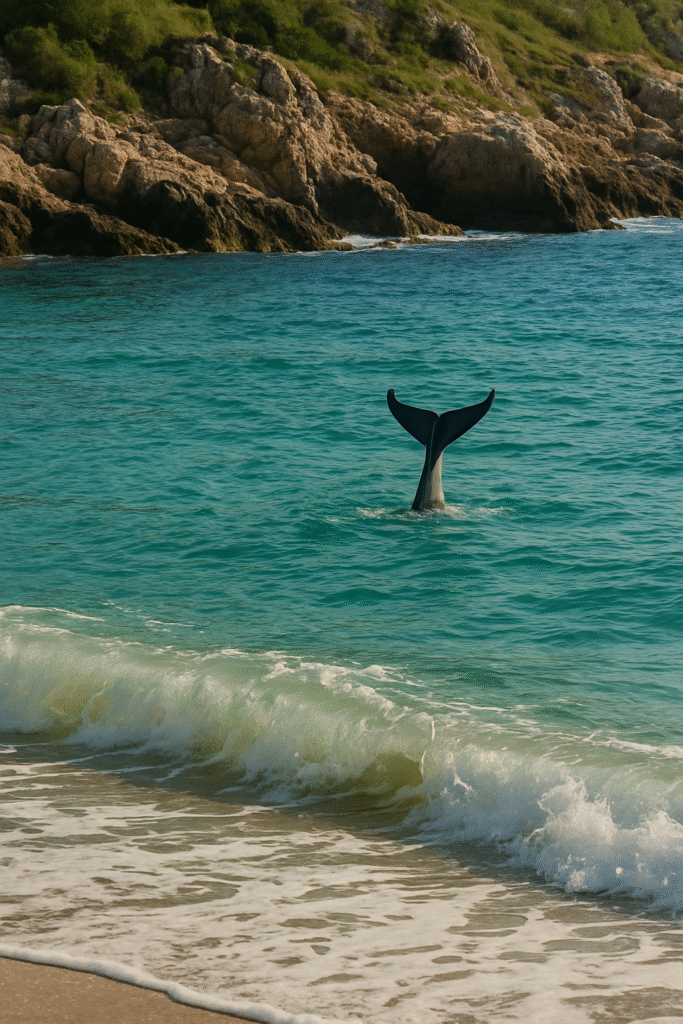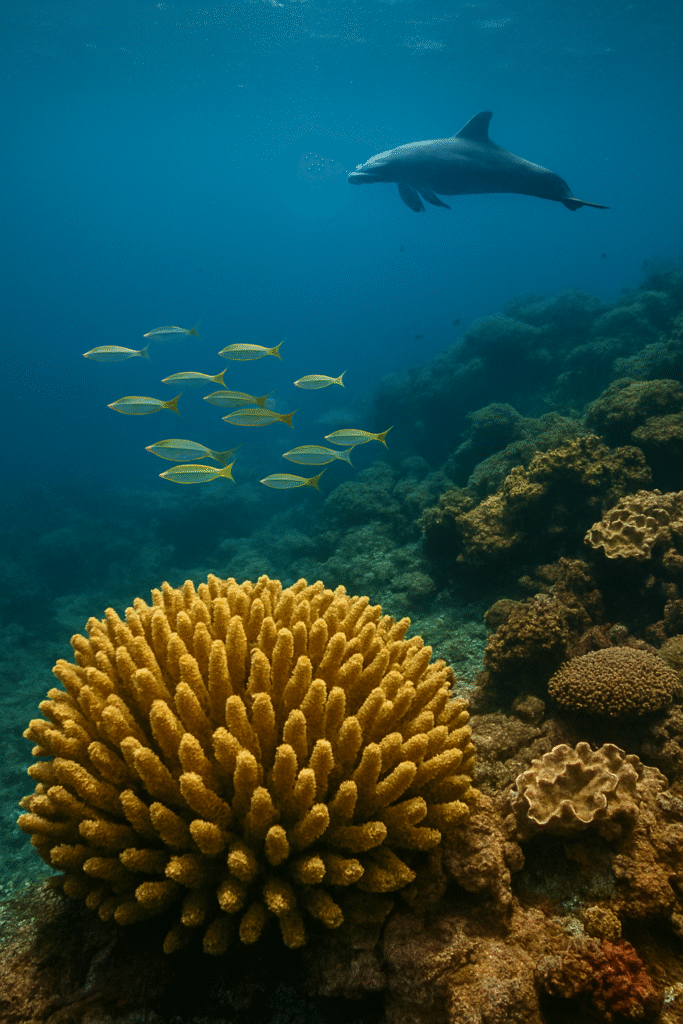
Unveiling Dolphin Wisdom: An Expert Dive into Marine Minds
The Enchanting World of Dolphin Wisdom
Dolphins have long captivated the human imagination, not only for their playful nature but for their striking intelligence and mysterious behaviour beneath the waves. As one of the most studied marine mammals in the field of marine biology, dolphins serve as both an educational gateway and a profound reminder of the ocean’s complexity. Their presence in folklore, research, and even therapy programmes positions them as much more than animals of the sea—they are symbols of intuition, wisdom and connection.
Marine biology offers a lens through which we can understand the delicate interdependencies of life in the ocean, and dolphins are the perfect introduction. Their streamlined bodies and social behaviour make them not only efficient swimmers but also emotionally resonant beings. Dolphins live in pods, communicate with intricate clicks and whistles and engage in behaviours that suggest culture, memory and even empathy. These elements of dolphin intelligence continue to intrigue scientists and educators alike, expanding our definition of intelligence and emotion in the natural world.
In educational contexts, introducing children and students to dolphins helps nurture curiosity about marine life and fosters respect for biodiversity. Programmes that include dolphin studies often report increased environmental awareness and empathy in learners. This connection between animal behaviour and emotional development is what makes marine education so impactful. It becomes more than facts and figures—it becomes a living, breathing exchange of wisdom between human and animal.
Furthermore, dolphins are now at the heart of several conservation efforts, particularly in light of challenges such as habitat loss, marine pollution and fishing net entanglement. Understanding their role in the marine ecosystem deepens our appreciation for how finely balanced ocean life really is. These animals are not just subjects of wonder—they are barometers of ocean health.
Janie’s Balanced Path aligns beautifully with these values, offering a balanced view of the natural world where curiosity and care go hand in hand. Sharing insights on dolphin wisdom underlines a commitment to informed awareness, empowering readers to think more deeply about their place in the natural world and the actions they can take. By exploring this topic, we not only celebrate one of the ocean’s most brilliant inhabitants, but also continue our journey of learning and respect for all life on Earth.
Inside Dolphin Intelligence: Nature’s Marine Geniuses
Dolphin intelligence is more than a delightful curiosity; it’s a subject of profound scientific inquiry that challenges how we define cognition and emotion in the animal kingdom. Within the marine biology sphere, dolphins are considered among the most cognitively advanced creatures on Earth. Their problem-solving skills, memory and communication techniques reveal a species capable of complex thought, empathy and even self-awareness.
Among the most compelling discoveries in dolphin research is their use of echolocation. This biological sonar allows dolphins to navigate, hunt and understand their environment with uncanny precision. But echolocation is more than a navigational tool—it also plays a role in social bonding. Dolphins can use these sound waves to identify individual pod members, much like a voice recognition system, and this creates a tightly knit social structure based on familiarity and trust.
Their intelligence is further highlighted through mirror self-recognition tests, in which dolphins have demonstrated an awareness of their own bodies. This rare trait places them in the company of only a few other species, including elephants and some primates. Such recognition suggests a level of consciousness that’s extraordinary in marine life. Studies have also shown that dolphins can learn new tasks simply by watching others, a trait known as observational learning—another marker of high intelligence.
In the wild, dolphins exhibit a variety of behaviours that indicate social intelligence, such as cooperative hunting, where pods coordinate their movements to encircle fish or trap them in bubbles. They also engage in what appears to be play for enjoyment, whether it’s surfing waves or passing objects like seaweed between each other. These behaviours are not only fascinating but also form the core of what we understand as dolphin wisdom—a type of intuitive intelligence rooted in connection and adaptability.
What’s remarkable is that these traits are not isolated to a few individuals but appear widespread across different dolphin species. This raises further questions in marine biology around the evolution of intelligence and its environmental pressures.
For those following Janie, recognising and respecting such intelligence in non-human species aligns beautifully with a mindful, educated lifestyle. Learning about dolphins invites us into a deeper conversation around the ethics of how we interact with marine life, from tourism to conservation.


Communicating with Clicks and Whistles
Dolphin communication is one of the most fascinating aspects of marine biology, and a key feature in what we term dolphin wisdom. Far from being random noises, the clicks, whistles and body movements used by dolphins form a rich, multi-layered language that is still being decoded by scientists today. Understanding this communication is essential for appreciating not only how dolphins relate to one another, but how advanced their cognitive and emotional lives really are.
Each dolphin is known to possess a “signature whistle”—a unique acoustic call that functions much like a name. Dolphins use these whistles to announce themselves, call out to each other and maintain group cohesion, especially in murky or dark waters. These signature whistles are learned early in life and can be used by others to get a specific dolphin’s attention. This level of identification and recognition indicates a memory system capable of long-term social bonds, comparable to our own use of names and social tags.
Besides vocalisations, dolphins also communicate using body language. Slaps of the tail on water, synchronous swimming, jaw claps and even bubble streams serve as visual and auditory cues that inform, warn or invite play. These gestures are vital in pod dynamics, where social hierarchy and roles are constantly negotiated. Observing such interactions gives marine biologists key insights into their societal structure and emotional capacity.
Research has also explored the possibility that dolphins can learn artificial languages. In controlled environments, some dolphins have been trained to respond to specific symbols or gestures, suggesting a capacity for cross-species communication. While this remains a controversial area, it supports the notion that dolphin intelligence and communication are intertwined and possibly adaptable beyond their natural environment.
In the wild, communication supports cooperative behaviours, such as coordinating movements during hunting or warning of predators. Some studies even suggest dialectal differences between pods in different regions, similar to human accents. These findings reinforce the idea that dolphin communication is as functional as it is sophisticated.
For Janie, sharing this level of nuance enriches educational offerings and builds a bridge between human understanding and marine life. It reflects the kind of intellectual compassion that defines your brand—curiosity guided by respect, and knowledge rooted in observation.
Ecosystems and Empathy—Dolphins in Their Natural Habitat
To truly understand dolphin wisdom, we must observe these majestic creatures in their natural habitat—where behaviour, environment and survival intertwine in a delicate dance. Dolphins are deeply embedded in complex marine ecosystems, and their wellbeing reflects the overall health of these environments. By studying their habitats, we not only learn about dolphins but also the rich web of life that sustains oceanic biodiversity.
Dolphins are commonly found in both coastal and offshore waters, from warm tropical seas to temperate oceans. Their preferences vary by species, but common traits include a reliance on healthy fish populations, access to coral reefs or seagrass beds and open spaces for travel and communication. Their daily lives involve more than hunting and socialising—they must also navigate threats such as fishing boats, pollution and shifting ocean temperatures.
Marine biology shows us that dolphins play a crucial ecological role as apex predators. They help maintain balance by controlling the population of fish and squid, preventing overgrazing of essential habitats like coral reefs. This, in turn, supports numerous other marine species. Any disruption in this balance, such as overfishing or habitat degradation, can ripple through the entire ecosystem.
One of the most poignant discoveries in recent years is the evidence of emotional depth in dolphins when reacting to environmental changes or the loss of companions. Some have been seen to grieve, maintain lifelong bonds or alter migration patterns in response to human activity. These reactions remind us that marine education must extend beyond biology—it must also consider the ethical dimensions of our interactions with these sentient beings.
Habitat protection has thus become a core concern in marine conservation. Efforts include establishing marine protected areas, regulating fisheries and reducing plastic waste and noise pollution. These initiatives not only benefit dolphins but enhance the resilience of marine ecosystems as a whole.
Janie champions this holistic understanding—where empathy and ecology are not at odds but deeply connected. Educating your audience about the environments dolphins depend on enriches your brand narrative, aligning it with both scientific literacy and compassionate advocacy.

Dolphin Wisdom and the Human Connection
The concept of dolphin wisdom extends beyond science into the realm of philosophy, emotion and even spirituality. As we’ve explored the physical and behavioural intricacies of these incredible marine mammals, one truth becomes increasingly clear: dolphins offer us a mirror through which we might better understand our own humanity. Their intelligence, social bonds and sensitivity remind us of what it means to live in harmony with one another and our environment.
For centuries, dolphins have symbolised guidance, joy and freedom across numerous cultures. Ancient Greek sailors considered them good omens, while Polynesian traditions viewed them as protectors. These cultural echoes still influence how we perceive dolphins today—creatures not only of science but also of myth and emotional resonance. This cultural significance enhances the educational message, making it more relatable and memorable to learners of all ages.
In therapeutic contexts, dolphins have also played a role. Dolphin-assisted therapy is used in certain settings to help children and adults with autism, PTSD and other emotional challenges. While the ethics and efficacy of such therapy continue to be debated in the academic community, its existence underscores the profound psychological impact dolphins can have on humans. They stir something deep within us—a sense of connection that feels as ancient as the oceans themselves.
This connection forms a powerful foundation for educational outreach. When learners feel emotionally engaged, they retain information more deeply and are more likely to act on it. Whether it’s changing personal habits, supporting marine conservation or simply learning more, that bridge from emotion to action is vital. This is precisely the kind of impact that Janie is poised to make—educational, empathetic and empowering.
As marine biology continues to evolve, so too does our understanding of dolphins. They are no longer seen just as research subjects, but as beings worthy of ethical consideration and protection. Their wisdom lies not only in their neural complexity, but in how they challenge us to live more compassionately, more consciously and more connected to the natural world.
By embracing this wisdom, your brand elevates the educational journey into something transformative. It’s not just about teaching facts—it’s about changing perspectives. Dolphin wisdom is an invitation to lead with knowledge and heart, the very essence of Janie’s Balanced Path.


You May Also Like

Tremor Legends: Unfolding the Stories of Earth’s Most Famous Quakes

Eruptive Wonders: The Power and Mystery of Volcanoes

